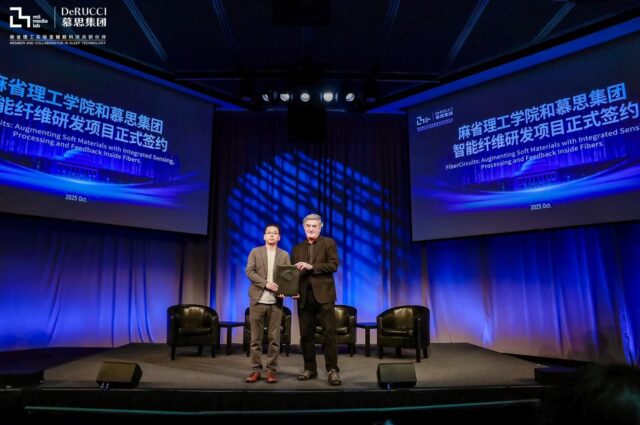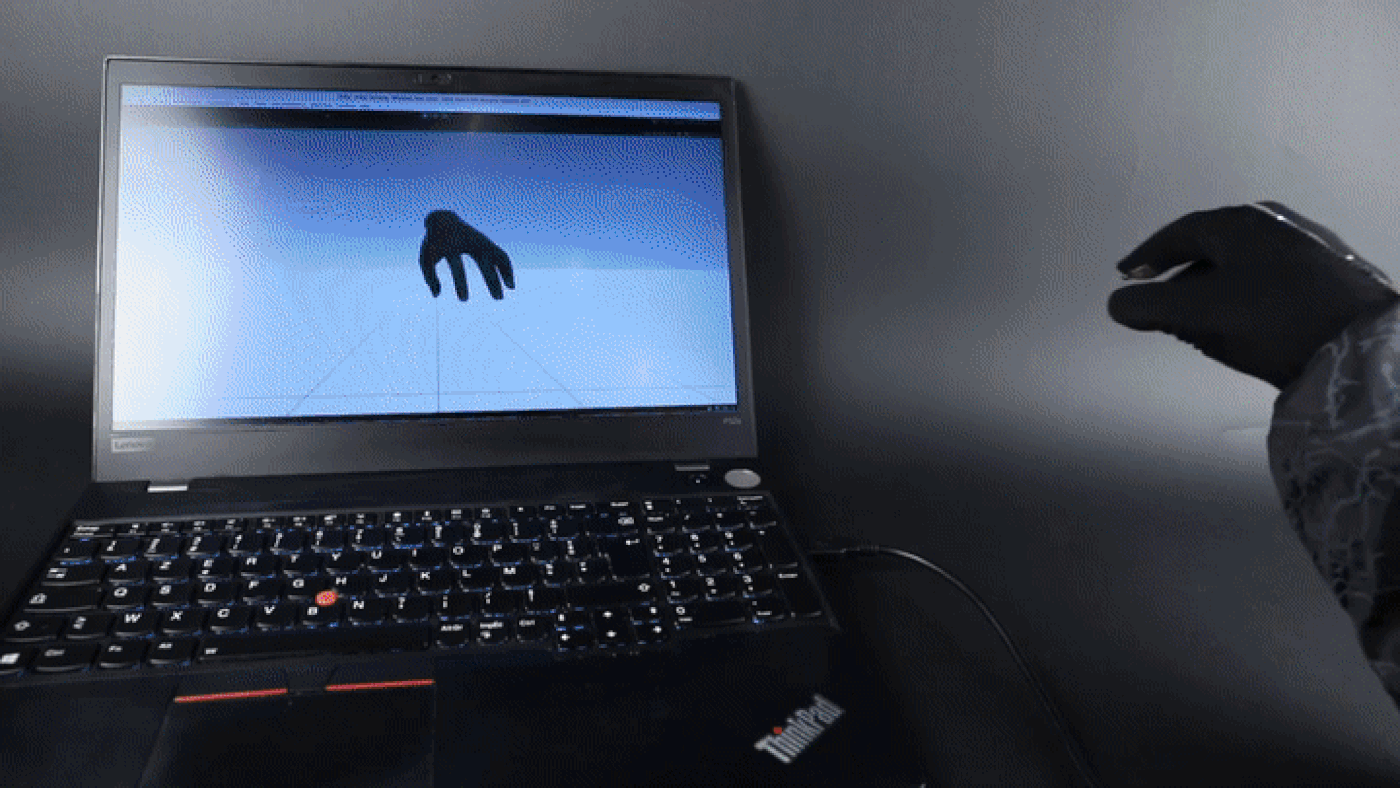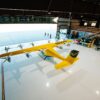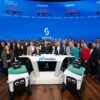Researchers from the Massachusetts Institute of Technology have been breaking new ground in the wearable technology field.
At a closed door event in late October, they formally unveiled their latest research achievement: the”FiberCircuits” intelligent fibre platform.
Spearheaded by MIT Media Lab researcher Joseph A. Paradiso, the technology promises to enable flexible materials to possess autonomous intelligence. He says that it signifies the entry of human-computer interaction into a so-called “weavable intelligence” stage where the fibres themselves are intelligent and capable of gathering human sleep insights.
It essentially works by embedding AI chips and micro-sensors into fibres, as described in a news release from Chinese sleep tech operator DeRucci Healthy Sleep Co Ltd (SHE: 001323) on Nov. 7. DeRUCCI will be providing financial backing to help accelerate the technology’s continued development beginning next year.
Thus far, funding contributions from the R&D arm of Accenture Plc (NYSE: ACN) (FRA: CSA) have helped make the MIT project possible.
The creators say FiberCircuits opens new avenues for sleep health research and monitoring. Additionally, they believe it represents a significant achievement in the Chinese-American partnership for developing intelligent soft materials. MIT embedded circuits as small as 0.9 millimetres to analyze biometrics in subjects.
“Embedding sensors and circuits into fibre-like objects allows them to be woven into items like clothing, which will elevate wearable computing to a whole new level,” Paradiso stated.
The MIT researcher explained how he believed that the technology would have multiple applications and potentially become a game changer with numerous possibilities.
“From sleep monitoring to medical assistance, and broader human-computer interaction scenarios, this material-level intelligence has the potential to reshape data acquisition methods and provide new interfaces for scientific and industrial collaboration,” DeRUCCI said.
At the event, they demonstrated how the technology could be used in a mattress for posture recognition, an eye mask prototype used to measure respiratory rhythm and nocturnal muscle activity, and a pillow utilized for quantifying skin response to pressure changes.
As highlighted on MIT Media Lab’s website, FiberCircuits is also being harnessed for virtual reality applications, a beanie that functions as a turn signal for bicycle riders when they move their head left or right, and research on other speculative wearable applications like sleep masks, smart rings and even space suits.
Paradiso currently directs the Responsive Environments Group at MIT’s Media Lab. It studies the latest developments in sensor technology and the impact they can have on humans. This group is responsible for helping to develop FiberCircuits.
Paradiso is an expert in wireless sensing systems, wearable body sensor tech, ubiquitous computing and power management for embedded sensors. He is known for lecturing scholars on these and other subjects and has written more than 350 publications regarding his areas of academic interest.
In a nutshell, FiberCircuits is distinct because it is an open-source, potentially mass-producible, privacy-preserving, closed-loop AI fibre that a bedding company could weave into a mattress today and a researcher could reprogram for alternative purposes tomorrow. These characteristics have made the technology’s development worth celebrating. Nonetheless, it is still in the prototype/research phase.
In addition to Accenture, Amazon.com Inc (NASDAQ: AMZN) (FRA: AMZ) is currently funding studies on the wearable tech system.

Paradiso (right) and DeRUCCI CTO Chen Wenze at the MIT-hosted event. Photo credit: DeRUCCI
Read more: AWS outage leaves Eight Sleep Pod users sweaty and confused
Asia has been a leader in intelligent fibre tech
Fibre-based electronics have been seeing a rapid rate of evolution in recent years thanks to researchers like those at the MIT Media Lab.
Many other investigators, particularly in Asia, have also delved into this niche of wearable intelligent micro-sensor tech. Fudan University and Donghua University in Shanghai have studied energy autonomous wearable fabrics for health monitoring and neuromorphic computing.
Furthermore, Singapore’s Nanyang Technological University has developed ultra-thin semiconductor fibres that can weave seamlessly into every day fabrics. This school published a groundbreaking study about their research in Nature last year.
For the first time, Nanyang was able to put high-performance crystalline semiconductor cores made of silicon and germanium into hair-thin fibres that retain flexibility. Nanyang described the technology as a “smart textile fibre” that can detect light and perceive its surroundings.
Read more: Spiritual sleep tech: luxury UK hotel starts using amethyst pillows
Follow Rowan Dunne on LinkedIn
rowan@mugglehead.com















Cedric Honnet
November 12, 2025 at 5:08 pm
A little correction might be needed: this work was not performed with DeRucci, it was done at MIT only, with funding from Accenture:
https://media.mit.edu/projects/fibercircuits
The next step of the project is currently funded by Amazon, and DeRucci will start funding the following step next year.
Rowan Dunne
November 12, 2025 at 6:57 pm
Corrected. Thanks for the insight!